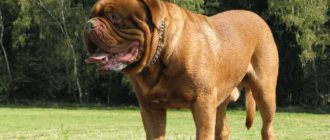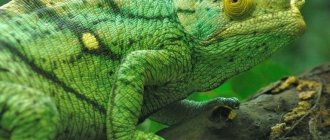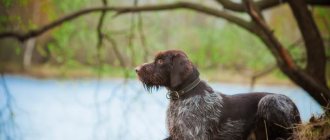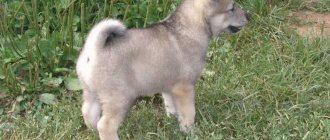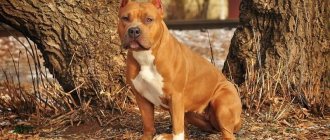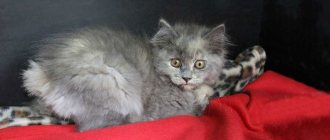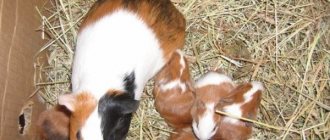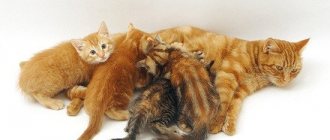A true Ridgeback is an excellent guard dog with innate vigilance and sensitivity, allowing him to instantly react to an alarming situation.
In addition, he is a non-aggressive bodyguard who never engages in combat unless absolutely necessary, requires little or no special training, and is a devoted family friend and children's favorite.
The ability to follow the scent and hunt, they can follow the trail both in the air and on the ground. They have excellent vision and a broad outlook. If German shepherds are afraid to come face to face with three or more opponents in the forest, then Ridgebacks control the entire open space, and this determines their decision - either to lead their owner out of a dangerous situation, or to go behind the rear of approaching enemies in order to disperse them. Some Ridgebacks have shown by their own example that they do not need special training, since they already perfectly participate in the show, follow the scent and obey the owner.
This is a self-confident dog who is well aware of his abilities. As soon as something new happens, the Ridgeback's dark eyes immediately light up with curiosity. Never mistreat your Ridgeback. Although we generally avoid giving dogs human characteristics, I can guarantee that the Ridgeback has excellent long-term memory. Treating him well will make you a most loyal friend. All he asks in return is the same loyalty, as well as respect for his integrity. When you think the Ridgeback's independent arrogance is going too far, remember that this is a proud dog with a lot to be proud of.
The Ridgeback's vast range of activity is concentrated between surprising extremes:
- on the one hand, the speed of reaction , which allows you to instantly dodge danger, on the other, indifferent slowness , when nothing interesting happens around;
- on the one hand the strength necessary for a farm dog to repel the attacks of people and animals, on the other, the incredible ease of movement that allows it to run mile after mile without fatigue.
Not a single horse ride of the owner will be too long for the Ridgeback, and he will always calmly run after the horse. Finally, the fierce courage that flares up when the owner is in danger is combined with gentle devotion to his friends and especially children. In fact, the only way to describe such a combination of remarkable power, quick movement, endurance and explosive alertness is to use the word balance.
The overall impression of the Ridgeback is elegance combined with an awareness of its own strength. It can be said that if you examine a dog and do not find it perfectly balanced, then it is not a Ridgeback. There is no doubt that the male, with all his muscles, every inch of which guarantees speed and agility, is slightly stronger than the female. However, with all his power, he will never reach the stage where strength will prevail over speed. Accordingly, bitches, despite all their elegance, are not devoid of well-developed muscles. Ridgebacks also have a herding instinct, although it is less developed than the hunting and guard instinct. However, this will not prevent an almost untrained Ridgeback from chasing a deer or other large animal. Fortunately, Ridgebacks rarely attack or injure large animals unless specifically trained to do so, although small prey, such as a hare, sometimes becomes an irresistible hunting temptation, especially for bitches. Ridgebacks are known to be able to form small packs of three or four dogs to track and kill wild boars.
Owning such a fast, strong and sensitive dog requires absolute control on the part of the owner. This breed is too good to fall into disrepute simply because the owner does not understand the true nature of his pet. The Ridgeback is a natural dog and therefore requires appropriate handling. This is not a lapdog or a toy for those who are afraid of physical activity and do not like nature.
An ideal breed for people who are able to appreciate the full range of its abilities and capabilities, including sociability, and are ready to become the owner of a dog with strong roots in the wild.
The Ridgeback owner must have complete control over his pet.
The only way to completely control a Ridgeback is to earn his complete trust and respect.
Stig G. Carlson "Rhodesian Ridgeback"
History of the Rhodesian Ridgeback breed
A comb on the back of a Rhodesian Ridgeback.
Jackal-like dogs with an elongated comb of wool on the back have been bred in Africa since time immemorial. Animals were especially popular among the Hottentots, who, due to their semi-nomadic lifestyle, needed four-legged protectors. In addition, this small people were engaged in cattle breeding, and since maintaining livestock in savannah conditions was always a difficult task, black shepherds used dogs to do the work.
Everything changed in the middle of the 19th century, when the European nobility acquired a new fashionable hobby - hunting African lions with dogs. The breeds of the Old World were not suitable for such a dangerous event, so the hunters turned their attention to native dogs who already had experience working with giant cats. The pioneer in this matter was a certain Cornelis Van Rooyen, who bought Hottentot dogs from a hunter from Southern Rhodesia (formerly Southern Zambezi) and began breeding the ideal lion beater.
The breed was developed using the good old method of crossing, and here Van Rooyen had wide scope for imagination. Thus, the clan of aboriginal dogs was replenished with genes from mastiffs, terriers, bloodhounds, Great Danes, retrievers and pointers. The experiment, oddly enough, bore fruit, and soon queues of people wishing to purchase a puppy began to line up at the amateur breeder’s farm. By the way, initially the animals were called not Ridgebacks, but Van Rooyen’s dogs, and this praise of the breeder’s personality continued until the beginning of the 20th century. It was only in 1922 that Francis Richard Barnes initiated the creation of a separate standard for the breed, according to which all dogs with a crest on the back were renamed Rhodesian Ridgebacks.
In Russia, Rhodesian Ridgebacks began to appear in the early 90s, and the first pair of breeders were imported not from Africa, but from the USA. In 1994, domestic breeders received the first litter of puppies, which included 5 “girls” and 1 “boy”. A year later, the nurseries were replenished with several more breeding individuals, who became the great-grandparents of almost all Russian Ridgebacks.
Interesting fact: despite the fact that Rhodesian Ridgebacks have always been regarded as unsurpassed lion hunters, they have never entered into direct combat with the beast. The dog's task was to pursue and detain the predator until the person arrived, but not to attack him. Subsequently, unscrupulous breeders began to deliberately hide this fact, endowing Ridgebacks with fantastic strength, allowing them to measure their strength with the king of animals.
Varieties
There are 2 subspecies of the breed: Rhodesian and Thai. The main differences between Ridgebacks are their origin, participation in human life, and different breeding directions.
Thai representatives of this breed are considered one of the oldest known breed groups. It is interesting that the dogs have still retained aboriginal features in their appearance. These four-legged animals belong to the group of companions.
Rhodesian Ridgeback breed standard
The Rhodesian Ridgeback is a hunter and a stern guard rolled into one. Strong, muscular, but at the same time not devoid of elegance, it is neither particularly massive nor a refined “dry” silhouette. Figuratively speaking, this dog is more of an athlete than a fighter, which is clearly hinted at by his toned body and dry, bony legs. Today the breed exists in two types - a rougher one, gravitating towards the appearance of a Molosser, and a lighter, so-called greyhound version. At the same time, overt large format, as well as excessive elegance of the animal’s constitution, are not welcomed by breeding specialists.
Head
Rhodesian Ridgeback
The triangular, flat skull of the dog is continued by a long, powerful muzzle with a moderate stop.
Jaws and teeth
Representatives of this breed are distinguished by strong, massive teeth and strong jaws. The only acceptable type of bite for the Rhodesian Ridgeback is a scissor bite.
Nose
In individuals with a dark iris color, the lobe is black. A brown tone is also acceptable if found in dogs with golden-amber eye color.
Eyes
Representatives of the breed have round, shining eyes that are relatively distant from each other. The color of the iris is in harmony with the shade of the coat, that is, the lighter the dog, the darker the eye color.
Ears
Ridgeback ears are not small, but not too large, set high, hanging down along the cheekbones. The base of the ear membrane is massive. The tip is thin, rounded.
Neck
The Rhodesian Ridgeback has a muscular, dense, medium-length neck. There is no suspension.
Rhodesian Ridgeback muzzle
Frame
The dog's body is harmoniously developed, slightly elongated, with a powerful back and a deep, spacious chest.
Limbs
sat down to rest
The front legs of the Rhodesian Ridgeback are bony, perfectly straight, with the elbows tightly pressed to the sides. When viewing the animal in profile, the legs appear noticeably wider than when viewed from the front. The shoulder blades are muscular and set at a good angle. The pasterns are strong and also inclined. The dog's hind legs are strong, dry and muscular, with distinct angulations and strong hocks. The paws of the Rhodesian Ridgeback are relatively small, with cat-like curved toes and tufts of hair between them.
Tail
The purebred Rhodesian Ridgeback has a medium-length tail with a thick, strong base and a slight bend.
Wool
The dog's coat is short, dense and shiny.
Ridge
breed – ridge: a comb of hard wool no more than 5 cm wide, located along the line of the dog’s spine. The correct ridge is formed by hair growing in the direction opposite to the rest of the coat. The ridge should be clearly visible and have a tapering contour towards the croup. It usually starts from the withers and ends in the lumbar region of the animal, reaching the pelvic bones. In addition, a classic ridge has no more than two symmetrically located rims/curls (the so-called crowns).
Ridge - breeds
Color
Rhodesian Ridgeback puppy
Rhodesian Ridgebacks are characterized by colors ranging from light wheaten to bright red. At the same time, it is quite natural if the dog’s ears and muzzle are painted black. Small patches of white on the paws and chest of the animal are not considered a defect, but the presence of large white spots on the fur is unacceptable.
Possible defects
Disadvantages are external features that do not fit into the standard. Most often, these include excessive “pumping up” of the dog, the square shape of its body, a short tail, turned out elbows and splayed paws. The ridge also has a number of requirements: it should not be too narrow or short, and its curls should not be barely visible or asymmetrical.
Rhodesian Ridgebacks are disqualified mainly for cryptorchidism, severe malocclusion, missing teeth, atypical colors, ridge with three or more crowns, as well as for deviations in behavior - cowardice, rage, aggression.
Description of the breed, characteristics
Since the moment the breed standard was approved, nothing special has been added to the appearance of Ridgebacks. The animals have a powerful physique and are very graceful. Despite their large size, four-legged animals have a balanced character.
The most important feature of the appearance is the dorsal ridge. In this area, the fur grows in the opposite direction when compared to the rest of the wool. The ridge should be clearly visible and extend from the withers to the croup.
Photo of a Rhodesian Ridgeback
Mating, pregnancy and childbirth
When choosing a mate for your dog, evaluate the exterior, health of him, his parents and grandparents. Before mating (~ 2 weeks in advance), both the bitch and the dog are treated for external and internal parasites and vaccinated. The health of both parents is a condition for healthy offspring.
Pupping in Ridgeback bitches lasts 60 - 64 days, fluctuation factors: age of the bitch, number of fetuses. Young females whelp earlier, low-fertility litters are born later.
| Critical periods, days after mating | What's happening | How to avoid problems |
| 1 — 7 | egg crushing, cellular synthesis | keep away from heat, hypothermia, radiation, chemicals, poisons, antibiotics and cytostatics |
| 16 — 18 | implantation of embryos into the walls of the uterine horns | protect from emotional and physical stress, do not change food and diet |
| 16 — 35 | placentation | eliminate vitamin deficiency A and E, prevent nervous breakdowns |
Signs of imminent labor:
- the stomach drops and becomes pear-shaped (last week of term),
- the mammary glands swell, colostrum is released (over several days),
- puppies move, can be easily palpated (in 7 - 10 days),
- Rectal temperature decreases sharply, from 38.5 to 36.5 - 37 degrees (per day).
Prepare an isolated, warm (28 - 30 degrees), dry room for childbirth, accustom the bitch to it 7 - 10 days before whelping. Cover the birthing area with waterproof diapers or film, equip it with a box of heating pads for newborn puppies, but it is better if already born puppies suckle from their mother during ongoing labor.
As they are born, mark the puppies with colored ribbons, register them in a table with the following columns: serial number, time, gender, birth weight, whether there is an afterbirth, features, color of the marking tape. Make a “nest” playpen out of boards so that the mother can get out of it, but the puppies cannot. Line the box with thick soft bedding. For walks, dress your bitch in a postpartum overall to protect her nipples from cold and dirt.
Character of the Rhodesian Ridgeback
Bouquet of puppies
The Rhodesian Ridgeback is a dog with nerves of steel and a great sense of self-esteem. This muscular handsome man is not intrusive at all, although communication with a person for him is the highest pleasure available. In addition, he is always ready for the work that you come up with for him. In particular, Ridgebacks make hyper-responsible guardians: dogs are very sensitive to violating territorial boundaries and encroaching on the wealth around them.
Nevertheless, it is not entirely correct to consider the Rhodesian Ridgeback a fighter who sleeps and sees who he wants to scuff his skin. On the contrary, a true representative of this glorious family has a strong nervous system that is not so easily shaken. He is not quick-tempered and knows how to curb his own feelings. A striking example of this is the attitude towards strangers. Deep down, dogs, of course, are not delighted with them, but when faced with strangers, Ridgebacks demonstrate cold indifference.
In everyday life, the Rhodesian Ridgeback gives the impression of an absolutely phlegmatic creature, misleading those who are little familiar with the breed. Dogs have been “turning on” this energy saving mode since time immemorial, thus accumulating strength for the upcoming hunt. Modern individuals are also in no hurry to abandon ancient traditions, in the absence of work, moving into a static contemplative state and leaving it at the first request of the owner.
Rhodesian Ridgeback with a child
The Rhodesian Ridgeback does not conflict with children. He is not irritated by children's antics, and he does not fall into hysterics from sharp screams and other “noise effects” that usually accompany games. If necessary, the dog will always support the company and delight your heirs with some simple trick. At the same time, it is important to observe moderation and not to put one-year-old babies on your pet. The Ridgeback will most likely find an approach to them, but he may not be able to calculate his strength - the difference in size is very significant.
Rhodesian Ridgebacks can be classified as one of those breeds that see rivals and prey everywhere, so the dog is not a friend to other pets, as well as street animals. As an example: if your neighbors on the landing have acquired a charming fluffy who is periodically let out to “ventilate” in the yard, you will have more worries. Otherwise, get ready to explain to cat owners the “ritual sacrifice” that a dog can perform when confronted with an animal on the street. Rhodesian Ridgebacks also conflict with each other, so keeping two males in the same territory makes sense only if you are entertained by the constant showdown between pets, grumbling and competition for the tastier piece.
Character and behavioral characteristics
“Rhodesians” are very devoted to the family (strong pack instinct), intellectually gifted dogs. But there is no carelessness, foolishness or unquestioning obedience in them; on the contrary, there is a lot of caution: they will first evaluate your every command and then carry it out. So, they may well ignore an invitation to go for a walk if it is raining heavily outside.
They value justice: insult, undeserved, from their point of view, punishment they will remember all their lives. Intelligence is the basis of the existence of Ridgebacks. Thanks to him, dogs are calm and non-conflict, do not give in to provocations, although they can stand up for themselves and their owner.
Puppies do not like monotony in games, they are very curious - they will definitely stick their nose wherever they can reach. Ridgebacks love dominance and comfort, so in the fight for the sofa you may well lose to him. To protect property or a person (child), they don’t even need to be trained - security qualities are in their blood. Therefore, he can scare your friend (if he doesn’t know him), even if he just touches your car.
Dogs of this breed are real intellectuals: they are not annoying, they can lie quietly on the sidelines for a long time, without bothering their tired owner, but during a walk you will have to work as hard as your pet. Long loneliness and the inability to “stretch” spoils the pet’s character, and the pet itself spoils the owner’s things.
Education and training
Give me your paw!
Briefly about training Rhodesian Ridgebacks: it is difficult, but possible if the training is preceded by a preparatory stage, after which the animal will be more attentive to the owner’s requirements. For example, it is very important to awaken your pet's interest in toys, since Rhodesian Ridgebacks love to play with each other, and not with inanimate objects. In addition, toys are a good help in cases where the puppy needs to be distracted, for example, from biting the owner’s hands. However, you shouldn’t overdo it with entertainment either: the game should not be protracted and tire the animal. Decide on the boundaries of what is permitted. If you plan to relax on the sofa cuddling with your pet, it’s enough to sit your tiny Ridgeback on it a couple of times. Those who are not yet ready to share a bed with a pet, but still an animal, will have to guard soft horizontal surfaces like the apple of their eye. Once your baby lies on the sofa, he will always practice this, especially in your absence.
Establishing tactile-emotional contact between a person and a puppy also refers to the preparatory stage of training. Teach your baby not to be afraid of your touch, sit him next to him more often, lift him up, passing your hand under his stomach. Command “Come to me!” It is not used for 3-month-old babies, but the pet must answer the owner’s call. If this does not happen, you will have to be cunning by luring the dog with a treat and loudly pronouncing its name. Gently introduce your Rhodesian Ridgeback to the leash. At 3-4 months, the puppy should adequately perceive this accessory and not go crazy when a collar appears on it.
When training, take into account the characteristics of the breed. The Rhodesian Ridgeback has a somewhat scattered attention, so long-term concentration on one subject is torture for him. Reduce the duration of lessons as much as possible (the best option is no more than 5 minutes) and increase breaks (from 10 minutes or more). Don’t forget to monitor your pet’s mood: if the dog shows obvious boredom at the very beginning of training, training will have to be temporarily stopped.
Let's dance
The Rhodesian Ridgeback's attention can and should be trained, which will then make working with him much easier. The classic technique for fixing this property of the psyche looks like this: the owner treats the dog with a treat, after which he squeezes the rest of the treats in his fist, raising his hand high up. An interested puppy will immediately try to get the object of gastronomic desire, jumping up and hypnotizing the person’s hand with his gaze. When attempts to get the delicacy are unsuccessful, the Rhodesian Ridgeback will use the last resort - it will look pitifully at the owner. It is necessary to hold the puppy’s gaze for as long as possible, after which the “sufferer” should be given a good treat.
Cynologists recommend starting to practice basic commands with the Rhodesian Ridgeback at 4-5 months. By this age, the puppies have become relatively stronger and more independent. How advisable it is to learn all the commands from the General Training Course is up to everyone to decide for themselves, but the call “Come to me!” and the ban "Ugh!" The Rhodesian Ridgeback is a must learn. Otherwise, the dog's life will be very short.
As for methods of education and training, representatives of this breed are more suitable for positive reinforcement, and this does not necessarily have to be a treat. Among Rhodesian Ridgebacks there are real gambling addicts, for whom the best incentive is the opportunity to chew on their favorite toy. Other dogs are content with their owner's praise and a pat on the head. Negative reinforcement also has its place in the life of the Rhodesian Ridgeback, but it should be used in exceptional cases, when the animal demonstrates a clear disregard for the rules or tries to measure strength with a person. No, hitting your pet is strictly prohibited, but patting him by the ear, pulling his collar or throwing him on his back, pressing him to the floor, is quite acceptable. It is very advisable to accompany the “execution” with a verbal prohibition, for example, with the command “No!” And please, no spanking with a wet towel, lashing with a twig or other offensive physical influences. Such humiliation will remain in the Rhodesian Ridgeback's memory for a long time and will significantly undermine your authority in his eyes.
Important: do not place excessive demands on the animal. Rhodesian Ridgebacks have never been working dogs and will never be. They are smart and trainable, but perfect adherence to commands cannot be achieved from these stubborn people. So be prepared for the fact that even a mature animal will periodically experience “system failures” when the pet ignores your order.
Serious
Funny
Advantages and disadvantages
This breed is ideal for keeping in a private home with a spacious yard. If the dog will be kept in an apartment, then the owner needs to take care of allocating time for long walks with it several times a day. But it should be remembered that the Ridgeback is a heat-loving animal and does not tolerate cold. Therefore, the option of a doghouse on the street in the presence of a private house will not work.
During puppyhood, babies can ruin a lot of things, mostly out of boredom. It is not uncommon that in the absence of the owners, the baby tears apart pillows, chews shoes, and turns over the contents of cabinets.
Difficulties may also arise in the process of raising a Ridgeback. Due to their character, these dogs are characterized by independence and pride. Often the pet’s opinion does not coincide with the owner’s and he demonstrates a difficult temperament. The future relationship with the dog depends on who shows himself to be a leader in the family.
Maintenance and care
The Rhodesian Ridgeback does not care whether you place him in a city apartment or rent a country house for this purpose. Provided good walking and a sufficient amount of sports activity, it will fit even into a small living space without any problems. Where a Ridgeback definitely does not belong is in a kennel and enclosure. Whatever one may say, the breed is not adapted to Russian climatic realities, and the dogs themselves perceive moving to a kennel as an exile. Rhodesian Ridgebacks are intelligent, proud creatures and need human company.
Hygiene
Tip from a Ridgeback: “If you are tired, lie down.”
The Rhodesian Ridgeback has a thin, dry, almost odorless coat with pronounced seasonal shedding. In fact, the breed doesn’t need daily combing, but by going over the animal with a comb a couple of times a week, there is a chance to maintain relative order in the house. By the way, it also makes sense to buy a vacuum cleaner with high suction power, since, alas, it is unrealistic to keep track of every hair that falls out of a dog.
It is not customary to cut or trim Rhodesian Ridgebacks; they are one of the neatest breeds, requiring virtually no grooming. The dogs themselves are sensitive to their own hygiene, so they do not like walking in bad weather. Promenades through puddles and muddy park paths are a dubious pleasure for representatives of this breed, which they will willingly sacrifice for the sake of cleanliness and comfort.
Don't become a perfectionist by taking your pet to the bathroom every week. The ancestors of Ridgebacks calmly managed without “bath days” and looked no worse than modern individuals. So wash your dog a couple of times a year with a neutral pet shampoo, the rest of the time content with dry cleaning with talcum powder or wiping the animal with a damp cloth (does not apply to show-class representatives). If you bought a puppy in the spring or summer, try to interest him in swimming in open water, provided that the water is warm enough. Just do it unobtrusively: if a child’s hydrophobia has transformed into a phobia, there is no point in trying to overcome it.
In general, caring for a Rhodesian Ridgeback does not require much effort. Trim the nails once a month, wipe the eyes if dust gets into them, remove plaque from the enamel and clean the ears - all this is a matter of a few minutes if the dog is accustomed to such procedures. Well, the notorious “airing” of the ears, which Ridgebacks greatly need, can be done in passing. Simply lift your pet's ear flap and wave it lightly, allowing air to flow inside the ear funnel.
Walk
Ridgeback at sunset
The Rhodesian Ridgeback is not a “pleasant background” dog. The breed needs an active, energetic owner who will not be lazy to spend two hours in the morning and evening in the nearest park or training area. Puppies should be prepared for going outside in advance. For example, in order to wean your baby from shying away from sharp unfamiliar sounds, you should rustle newspapers or bags in his presence more often, blow a whistle and slam the door loudly. At first, the Rhodesian Ridgeback puppy can be carried in a backpack (if the animal is less than 3 months old). Then, when the baby receives comprehensive vaccinations and has served the required time in quarantine, he can be walked on a leash.
Don’t get ahead of the curve and don’t try to train your Rhodesian Ridgeback to be a daredevil during his first outings. It takes time for your puppy to get used to a new environment, so don't take him for walks near highways or shopping centers. Start introducing the animal to a new reality in quiet public gardens, in your own yard or on country lawns, gradually moving to noisier locations. At 4-5 months, the Rhodesian Ridgeback is relatively stress-resistant, so it is quite possible to walk with him to the supermarket, go down the underground passage or ride the bus.
No matter how well the Rhodesian Ridgeback is raised, his instincts rule over him. Seeing a stray cat or a chicken walking along the road, the dog forgets about everything and rushes after the prey. It would be good if at that moment the animal was walking on a leash. In this case, a prohibiting command and a sharp tugging of the strap will cool his ardor. If not, problems are guaranteed. Accordingly, if you are going to let your Ridgeback run, give him the opportunity to do this in safe places, for example, on a fenced plot or on a lawn outside the city.
Feeding
After a weekend at grandma's
Rhodesian Ridgebacks are not the most picky gourmets, but they will never refuse a supplement. Indulging your pet’s brutal appetite is not recommended, because members of this family are practically champions of extreme weight gain. Accordingly, if you need a dog, and not a pig in its guise, stop worrying about your four-legged friend being underfed.
The daily meat requirement for a Rhodesian Ridgeback is 300-500 grams, that is, about 80-100 g per 10 kg of body weight. The optimal types of protein would be beef (not veal) and lean lamb. From 7 months, meat can be replaced with beef tripe, however, due to its low energy value, the portion should be twice as large. A good alternative to tripe is lamb flank, which is given both boiled and raw. Once a week you can experiment with turkey or chicken breast. Tubular bones are prohibited for Rhodesian Ridgebacks, but they can easily be replaced with calf legs - puppies gnaw them no less willingly.
Healthy
- Sea fish (cod, hake).
- Low-fat cottage cheese, kefir.
- Cereals: rice, buckwheat.
- Chicken and quail eggs (once a week, unless allergies are detected).
- Green apples (red ones provoke allergies).
- Cabbage: broccoli, cauliflower, Chinese.
- Zucchini.
- Carrots (grated and seasoned with vegetable oil).
- Greens: parsley, celery, dill.
- Vegetable oil: sunflower, olive, corn.
Rye or bran crackers, cheese, and dried fruits are also suitable as stimulating treats for Rhodesian Ridgebacks.
Harmful
- Starchy vegetables and fruits, including potatoes and bananas.
- Any meat and bone broths, both in pure form and as an additive to cereals.
- Pasta.
- Smoked meats and pickles.
- Sweets.
- Canned food.
- River fish.
- Garlic and onion.
- Hot and spicy dishes from the host's table.
Reviews
Maria, Omsk: “I would never trade my beloved Ridgeback for any other breed. Although the dog is still small and plays dirty tricks wherever he can, how can you not love this impudent face. When I come home from work, I often find my home in an unimaginable mess. Everything that came within Grant’s reach could be thrown away. But, I hope, over time this will pass, the dog will grow up.”
Alexey, Crimea: “My Trade is three years old. As a puppy, the dog caused a lot of trouble, but it was my own fault, at first I devoted little effort to raising him. It’s good that I came to the forum of African Ridgeback lovers in a timely manner. There I learned a lot of useful information and advice. The main thing is that the moment was not missed. Now Tride is a smart and calm dog. I learned to run with my Ridgeback in the morning and evening, which is good for my health. I recommend this dog to those who don’t like to sit still.”
Olesya, Minsk: “They gave me a puppy when she was six months old. They gave it away due to a sudden departure abroad. I studied a lot of information on the Internet about the description of Zephyrchik’s breed, disposition, and character in order to somehow begin to get along with him. The dog turned out to be surprisingly ill-mannered, gnawing and tearing everything that comes across its teeth. It feels like the animal is doing this to spite me. I signed up for training courses, I hope I will solve all the problems with raising a disobedient dog.”
Health and disease of Rhodesian Ridgebacks
Home Security Guard
Rhodesian Ridgebacks have a strong immune system and high body resistance, but this does not free them from genetic ailments, the most unpleasant of which is dermoid sinus. Surprisingly, this defect of intrauterine development, as a result of which non-fusion of the skin in the area of the spine occurs and their growth deep into the tissues, is closely related to the formation of the ridge. In addition, animals are susceptible to other hereditary diseases, in particular:
- hip dysplasia;
- hypothyroidism;
- volvulus;
- osteochondrosis;
- ear infections;
- obesity;
- allergies;
- deafness;
- cataracts;
- entropion.
Photo and video review
In the photos and videos provided below you can see the South African Ridgebacks in detail.
Before you bring a Rhodesian Ridgeback into your home, you should think about your capabilities. If the owner is a homebody by nature and does not like an active lifestyle, then the relationship with the dog may not work out. In this case, it is better to opt for another breed. Only for an energetic person who is interested in sports, long walks, and hunting, the Ridgeback will be an ideal option and companion.
How to choose a puppy
- Make sure that the nursery you have chosen is registered with the RKF.
- Give preference to a breeder who practices country breeding of Ridgebacks. At the same time, pay attention to the presence of open-air cages on the territory of the nursery. A seller who values his reputation should not have animals in them.
- Rhodesian Ridgebacks are very fertile and sometimes give birth to 10 or more puppies. Some breeders get rid of excess offspring, others keep the entire litter, but if you take a baby from a bitch nursing more than 6 babies, get ready to get a small, weak creature that needs extra attention.
- Ask a kennel worker to show you all the puppies. If the babies have almost the same size and constitution, this indicates the high quality of the offspring.
- Check with the seller when the Rhodesian Ridgeback female had her penultimate litter. If less than a year has passed between births, the dog is unlikely to have had time to recover physically, which means its offspring will be frail. In prestigious European nurseries, breeding bitches are allowed to give birth no more than 2-3 times in their entire lives.
- Ask the breeder to provide as much information as possible about the puppy’s parents: their age, championship titles, pedigree, number of births.
- Having a ridge for a puppy is a must. Do not believe the seller's oaths that the ridge will grow in a couple of months. It won't grow! Not in a month, not in a year, not in ten years.
List of suitable nicknames
The nickname that is chosen for the dog determines its fate and character. Sometimes the puppy is already given a name at the kennel, and if it suits the owner, then there is no need to change it. The main thing is that the nickname is short, clear-sounding, and pleasant to the ear.
Nicknames for both sexes of Ridgebacks:
- Armagh, Artha.Ajax, Arnie, Brad, Bundy, Bally;
- Vai, Vaizey, Vegas, Vesta, Gerd, Graf, Grammy, Gordon, Hera;
- Dakar, Jussi, Jess, Dofi, June;
- Zlata, Cardinal, Carrie, Kara, Christy;
- Lake, Mara, Nord, Olympus, Perseus, Spark, Sunny, Sally;
- Taigan, Todi, Tira, Tami, Ulai, Urmas, Uma;
- Fulla, Fly, Fina, Hooch, Tsaki, Cherry;
- Sharkhan, Sherrill, Shoka, Exotic, Elvi, Evry, Esson;
- Yusta, Yard, Yaray, Yasa.
Photos of Rhodesian Ridgeback puppies
Kinds
It may seem at first glance that the Rhodesian Ridgeback breed has only one color. In fact, the range is quite wide:
- darkened gold;
- bleached red;
- golden;
- red;
- burgundy
All of these colors are designed for camouflage in desert conditions. They shimmer beautifully in the sun, and a healthy dog has smooth and shiny fur. Rhodesians often have a black mask on their face that extends up the middle of the muzzle.
There may also be a small white spot on the chest, but otherwise the color is always uniform. In newborn puppies, the color may appear black, but it changes with age - this is considered normal. A black Rhodesian Ridgeback is not possible in nature, just like a white color.
Rhodesian Ridgeback price
The price tag for a Rhodesian Ridgeback puppy can be both impressive and symbolic. It all depends on the age of the animal, its class and the purpose pursued by the seller. Purebred representatives of the breed from advertised nurseries are offered for sale for 40,000 - 60,000 rubles. Amateur breeders have lower prices: pet class - from 20,000 rubles, breed - 30,000 - 40,000 rubles. The most economical option is urgent advertisements from owners of Rhodesian Ridgebacks who purchased a puppy, but did not calculate their own strengths and could not get along with the breed. In the same way, grown-up puppies or adult individuals are sold, and their value is greatly underestimated.
Where to buy and price
The average price of representatives of the breed is 20-30 thousand rubles. Puppies sold without papers may cost less, but purchasing them is risky. It is important to choose a trusted kennel that offers quality puppies; Ridge's Star, Moyo Savannah, and ARESVUMA have a good reputation.
If you want to get a Rhodesian Ridgeback, make sure you can allocate enough time for education, training, and walks. Then you will get a four-legged friend for all family members. The pet will not be picky about its maintenance and feeding, but it is important to follow all care recommendations.
